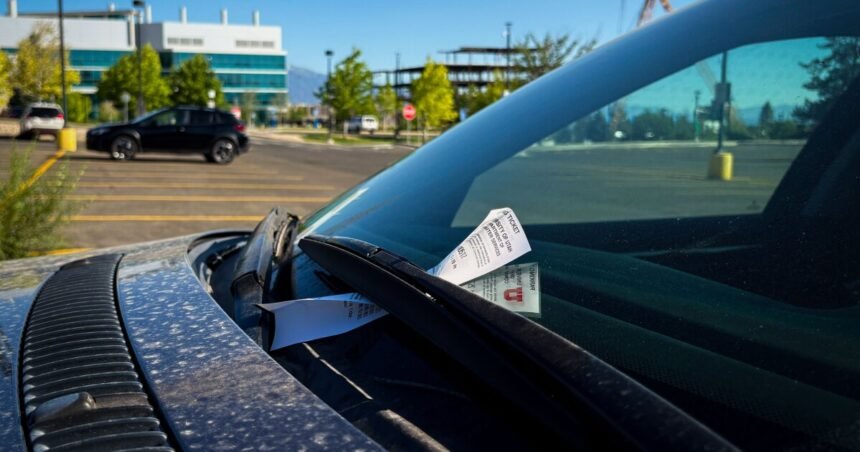University of Utah employees who want to purchase the school’s expansive A parking pass will now have to fork over more than $1,000 a year.
With full lots and rising costs, the school’s scheduled price increase has left some questioning whether it’s even worth buying a permit.
U student Gabe Smith works at the school’s writing center. He used to live in the Kahlert Village dorms and often found himself in a common predicament on campus.
“I can’t tell you how many times I was going around the parking lot for an hour or more looking for parking,” he said.
Now he lives in nearby off-campus housing and has a Salt Lake City parking permit that allows him to park across the street from President’s Circle.
A U semester pass for the upcoming school year will cost $213.36. Smith said the most he’d pay would be $500 per semester, but only if he could be guaranteed a parking spot every time he drove to campus.
That’s not likely. University President Taylor Randall wants the student body to grow to 40,000 from its current enrollment of around 35,000 and has plans to transform the campus from a commuter school to one that supports on-campus life, like designs for “college town magic.”
Collin Simmons, executive director of Auxiliary Services at the University of Utah, said there will always be commuters, and he has to find a balanced approach in handling those who take transit, those who come in cars and other methods of transportation.
“No matter what, I’m going to have to plan on folks coming to campus, whether it be the train or cars, for example,” he said. “But I also have to make the accommodations and the plans for those that are going to live on campus, and if they need to store a car.”
The A permit will cost $1024.56 in fiscal year 2026, which is about a 10% increase from last year. Staff and faculty can get $42.69 deducted from each paycheck to pay for the permit, which allows parking in A stalls and U stalls.
For those who want to purchase the U permit, which is valid for U stalls and available to students, faculty and staff, they can spend $426.72 for two semesters.
Auxiliary Services determined the cost breakdown based on necessary expenses like maintenance, parking operations and transit operations.
The university has an ongoing partnership with the Utah Transit Authority that gives students and employees access to the majority of UTA services and encourages mass transit ridership.
Second-year undergraduate student Lucy Demoux plans to go that route in the fall instead of buying a permit, though it has its own complications.
“I know transit up here isn’t super reliable, which is unfortunate, especially if you live off campus, because I think we have a decent transit system just around campus, but like, getting from, like, off campus to campus is kind of frustrating,” she said.
Simmons said the goal is to make transit “as good as we can,” while also considering if the right parts of the valley are being serviced properly.
“At times, it can be frustrating, but a large majority of the time, mass transit in particular can be extremely helpful,” he said.
But not everyone has their choice of transit.
Over the years, political science assistant professor Christina Cottiero said she’s cut down the amount of time she spends on campus. She doesn’t even buy a parking permit anymore because it’s cheaper to get a half-day pass for the time she needs to teach her classes.
“For faculty like me, who don’t live near campus or anywhere near a TRAX stop, we pretty much have to drive when we want to go to campus,” she said. “And yeah, then we get to pay to go to work.”
Simmons said parking is an auxiliary service, meaning it has to fund itself.
“Although it can be kind of difficult to think to yourself, ‘Yes, you have to pay to park where you work,’ that’s just the way our campus structure is set up as such,” he said. “If it were free, there would be no way to maintain and take care of, with student dollars, the actual parking infrastructure costs that need to take place.”
Despite the increases, Simmons said he hasn’t seen a decrease in permits bought. It’s either steady or increasing, according to their numbers.
“Now, will that change with these rates that went into effect last week?” he wondered. “Maybe, but we have not seen those numbers yet.”
Beyond 2028, Simmons said there will likely be a new three to five-year rate plan.
Editor’s note: KUER is a licensee of the University of Utah but operates as an editorially independent news organization.











